Milan is a wonderful city full of striking architecture, public art, historical depth and countless excellent restaurants. The influence of Leonardo ca Vinci, the city’s most notable resident, is visible throughout. We got a small taste of the city’s offerings on a one-day exploration before returning home to Seattle.
We arrived in Milan after driving from Cortina in the Dolomites. Our short walk from the rental car return to our hotel passed several dramatic modern buildings. And our balcony at the Milano Verticale had wonderful views to a mix of modern and traditional architecture.
We spent the following three days at the Italian Grand Prix, then had a day to tour the city before our flight home. Walking to Milan’s famous cathedral gave us a micro taste of the city. We passed a centuries-old canal lock designed by da Vinci, café-lined streets, the 17th-century Palazzo Brera, and a 19th century monument to da Vinci in Piazza della Scala.
Our first stop for the day was the stupendous Duomo di Milano, the 2nd-largest cathedral in Europe and 3rd-largest in the world. Construction of the cathedral began in the 14th century, and it was completed six centuries later in 1965. The cathedral’s long-standing historic importance is evident in Milan’s street layout: a spoked-wheel design with the Duomo in the center.
The cathedral exterior’s rich decoration includes 3400 statues, 150 gargoyles, 135 ornate spires, plus flying buttresses and falconature. Above it all stands a gilded statue of the Madonna at 356 ft (108.5 m). Tradition dictates no Milan building can be higher, and any taller structures include a small replica on the roof so that the Madonna is always the highest point in the city.
Incorporated into the original design are rooftop terraces that are open to the public. The complex design is impressive from a distance, but seeing it close-up gave us a real appreciation for the intricacy of the design and the labor that created it. We spent ages exploring the space, amazed that we actually could be up there.
The cathedral is equally dramatic on the inside, full of marble, stained glass, soaring pillars, monuments, and artwork. The cathedral organ, created in 1938 to replace 2 16th-century instruments, is the 2nd-largest in Europe and 7th-largest in the world. The 15,800 pipes range in height from a few inches to over 30 ft (9 m). Beneath the church is an archeological exhibit displaying the ruins of the earlier churches that stood on this site as far back as the Roman Empire.
After visiting the cathedral, we explored the nearby area, including the adjacent Piazza del Duomo with its statue of Vittorio Emanuele II, who in 1861 became united Italy’s first king. Also dedicated to the first king is a magnificent 19th-century glass-covered pedestrian mall that today houses many high-end shops. Close by is the flame-shaped Monument to the Carabinieri, dedicated to those who served in the Italian gendarmerie. We then had lunch at rooftop Maio Restaurant, with its wonderful view to the cathedral.
Next up was the Biblioteca Ambrosiana, established in 1609, and one of the first public libraries. The collection contains over 1 million printed volumes, many dating from the 16th century, and over 40,000 manuscripts, including a dozen by da Vinci, in particular The Codex Atlanticus, his largest set of drawings. The building also houses the Ambrosian art gallery, full of Renaissance Italian masterpieces.
On our way to our final attraction of the day, Castello Sforzesco, we stopped in at the church of San Sepolcro, founded in 1030, and passed the Roman ruins of Colonne di San Lorenzo. Beyond the columns, a monument to the Roman emperor Constantine I stands in front of the San Lorenzo Maggiore basilica. And lastly, we passed the Temple of the Victory, dedicated to the Milan soldiers who died in World War I.
The massive medieval fortress Castello Sforzesco was built in the 15th century and later expanded in the 16th and 17th centuries to become one of the largest in Europe. The square plan has walls 656 ft (200m) long and 23 ft (7m) thick. In use until 1862, the fortress currently houses several museums and for 13 years has hosted the season-long “Summer at the Castle” music festival.
After visiting the castle, we stopped for a refreshing local beer at nearby Simplon Park, a 95-acre (38.6 ha) public space established in 1888. Walking back towards our hotel, we enjoyed a traditional Italian meal streetside at Veramente. We loved the vibe, and the food was amazing. It was a fitting way to end our exploration of Milan.
Our walking route through Milan is shown on the interactive map below. Click here for a full-page map.
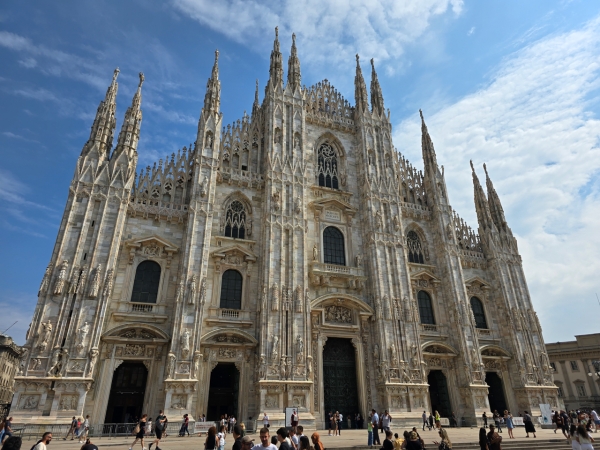
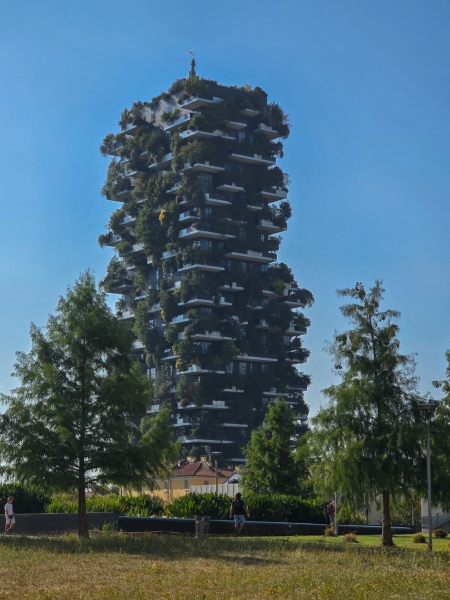
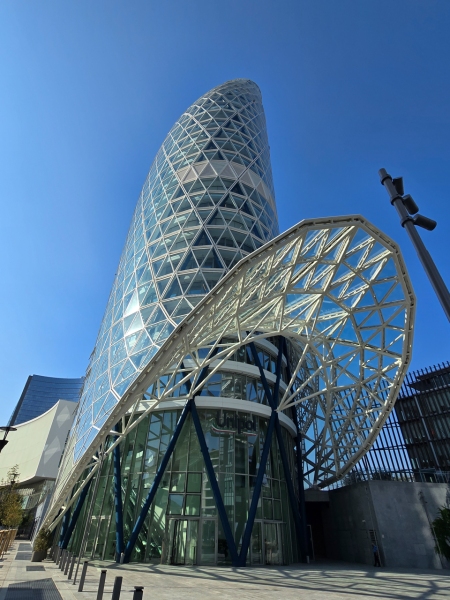
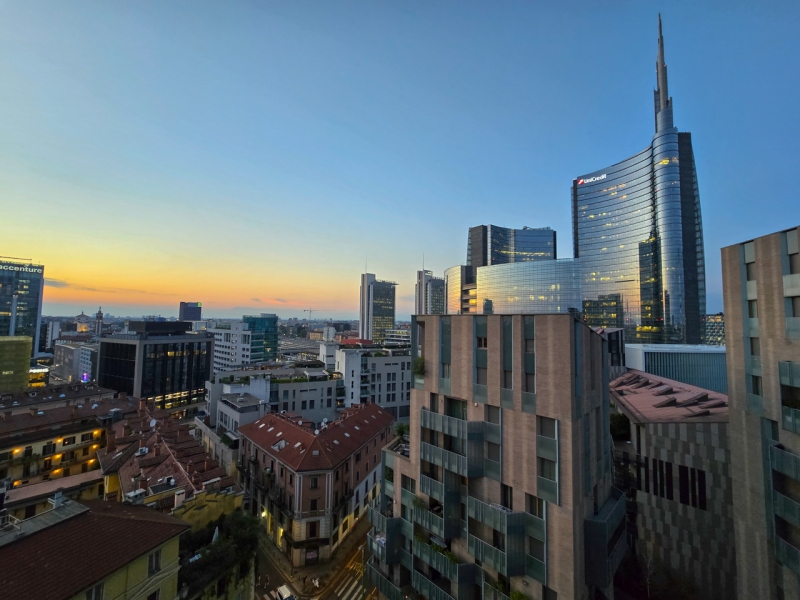
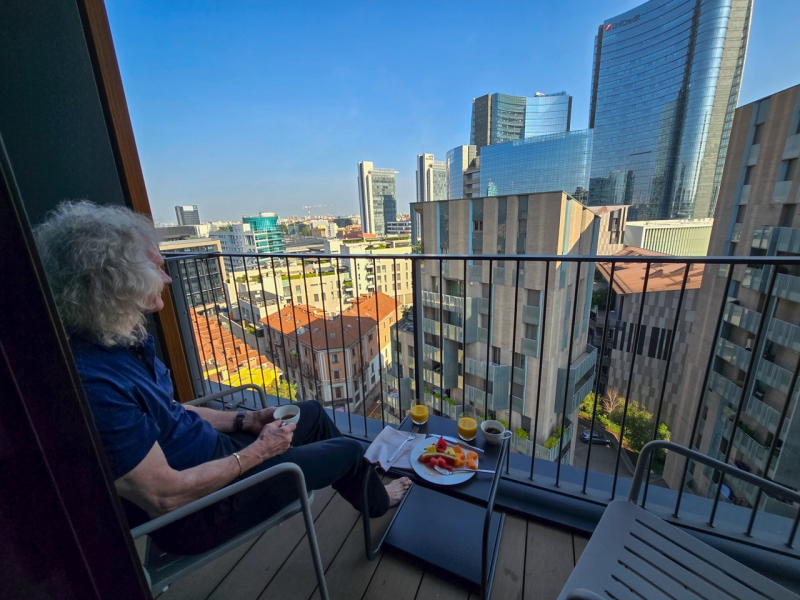
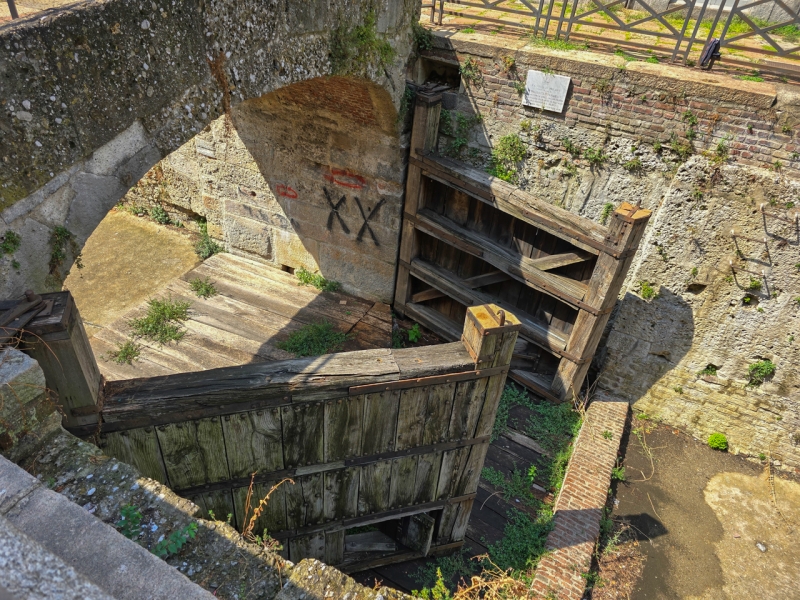
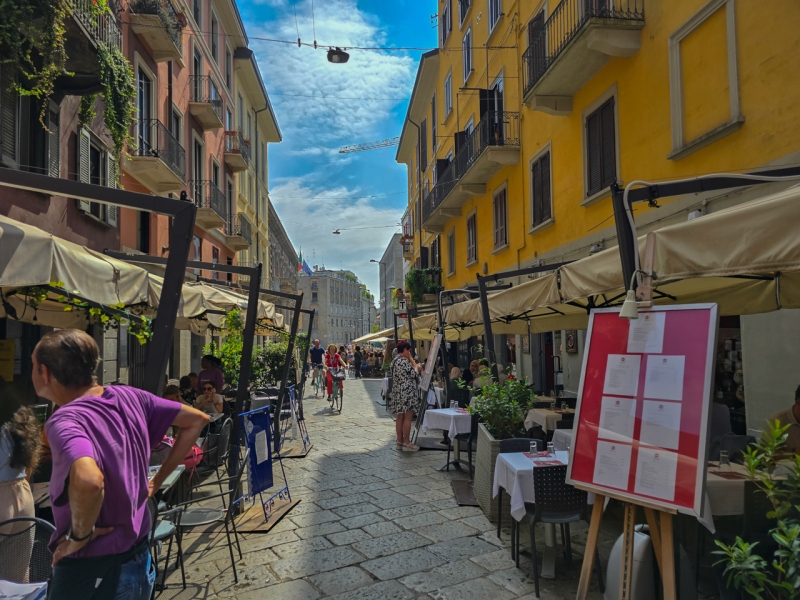
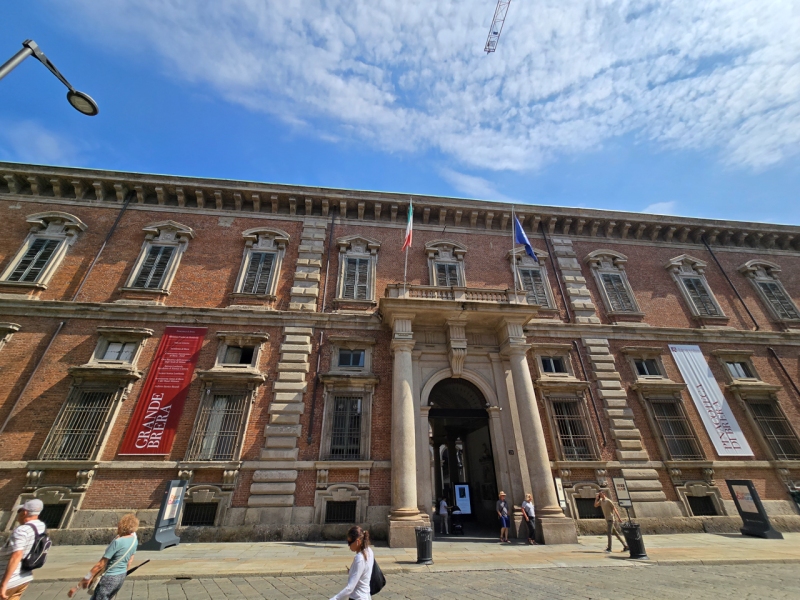
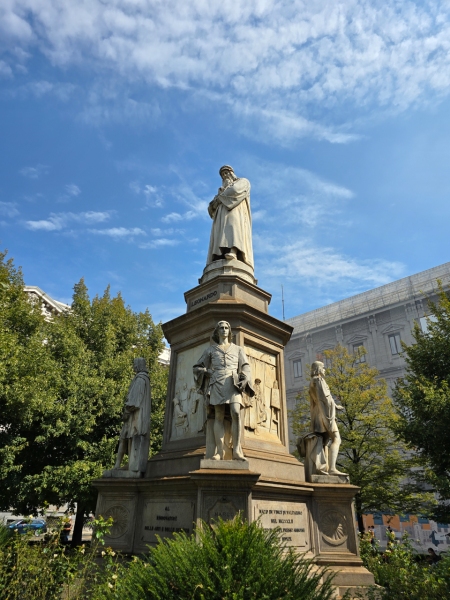
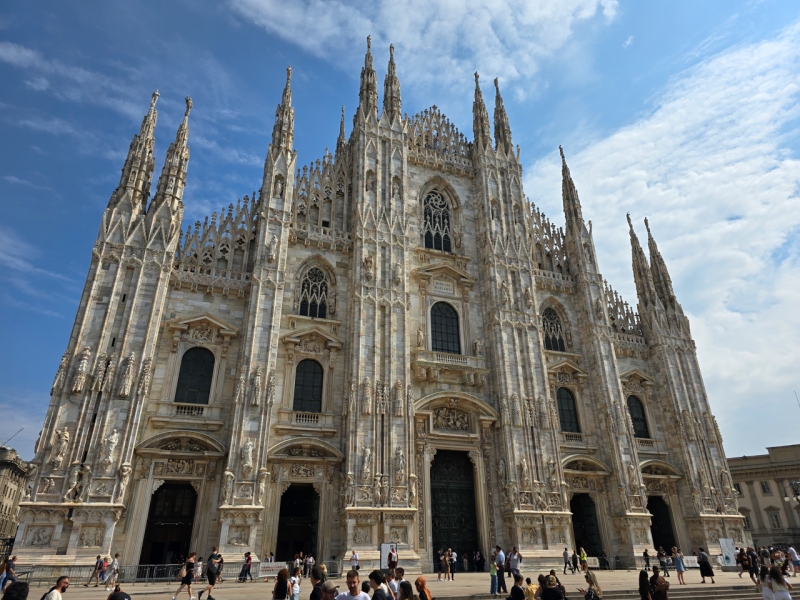
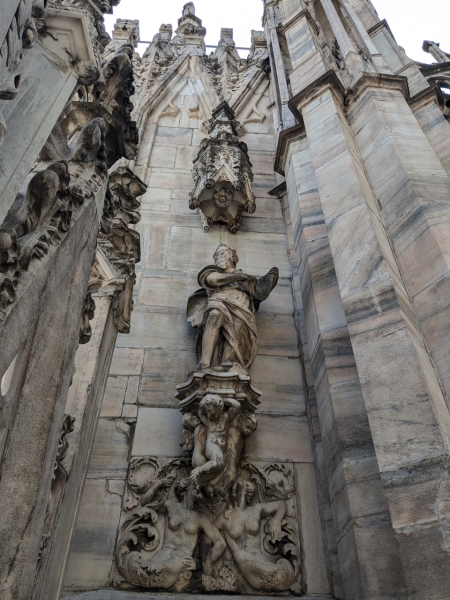
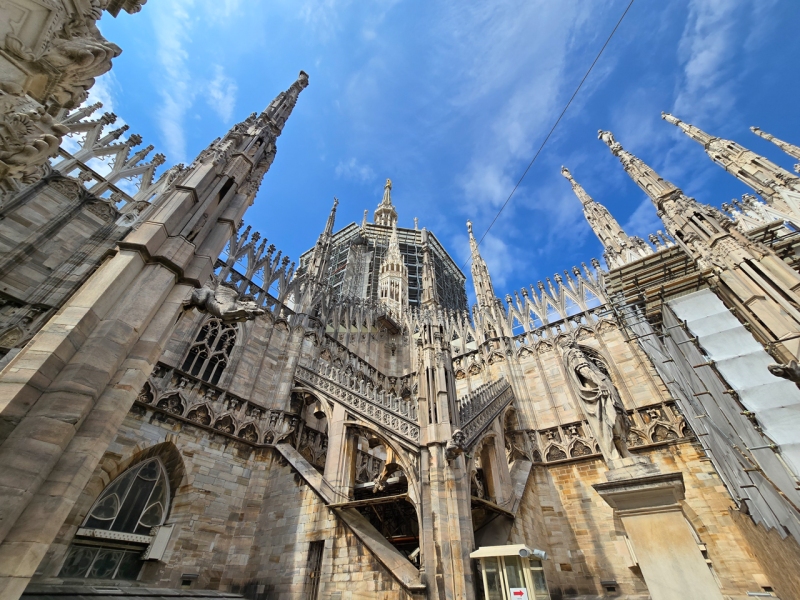
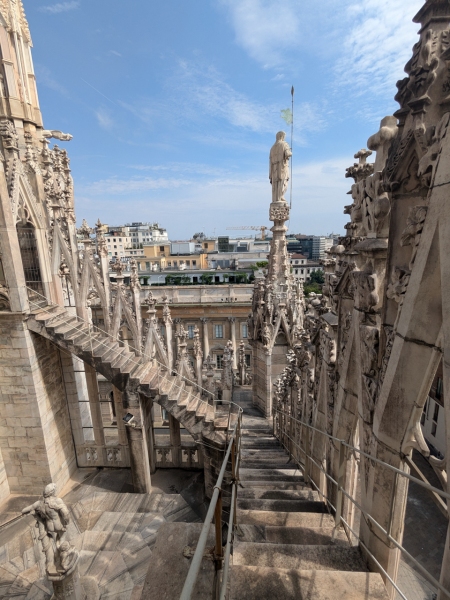
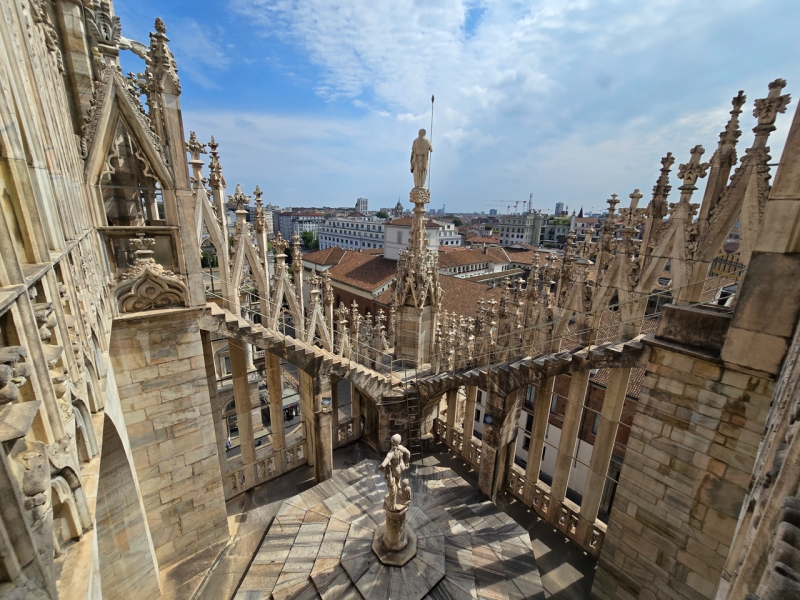
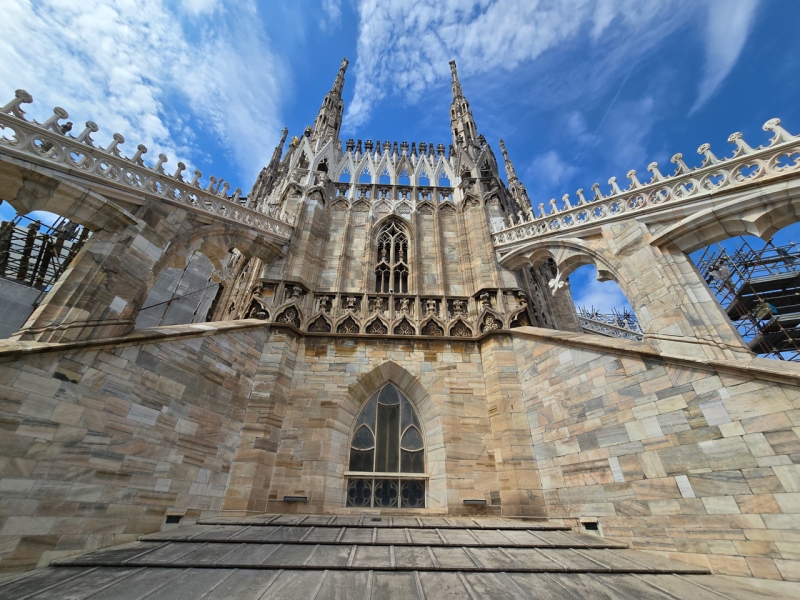
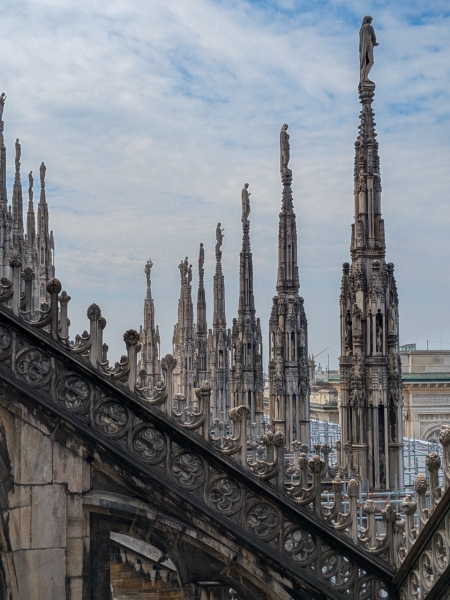
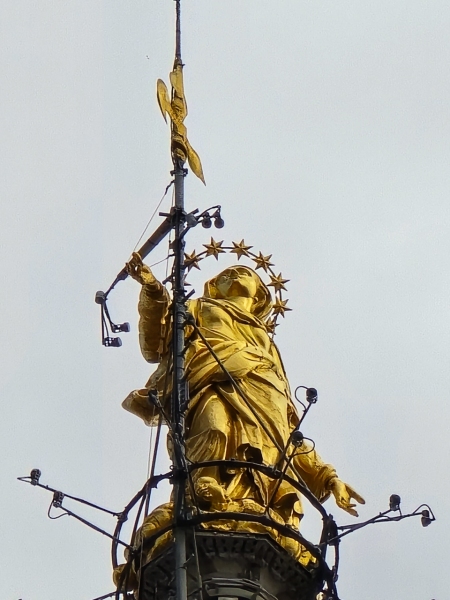
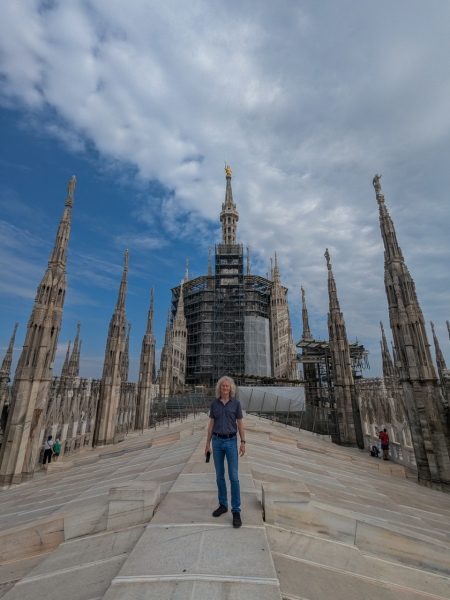
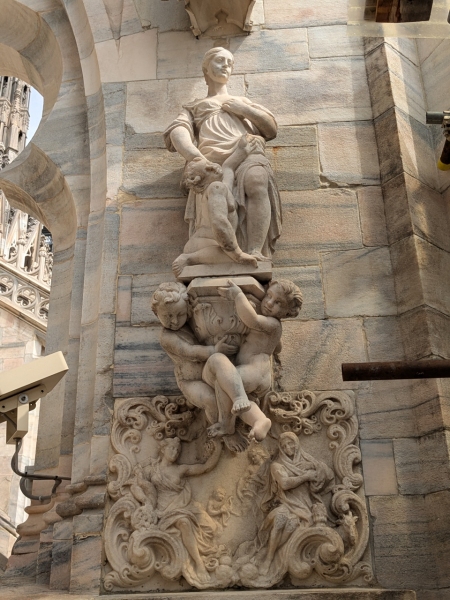
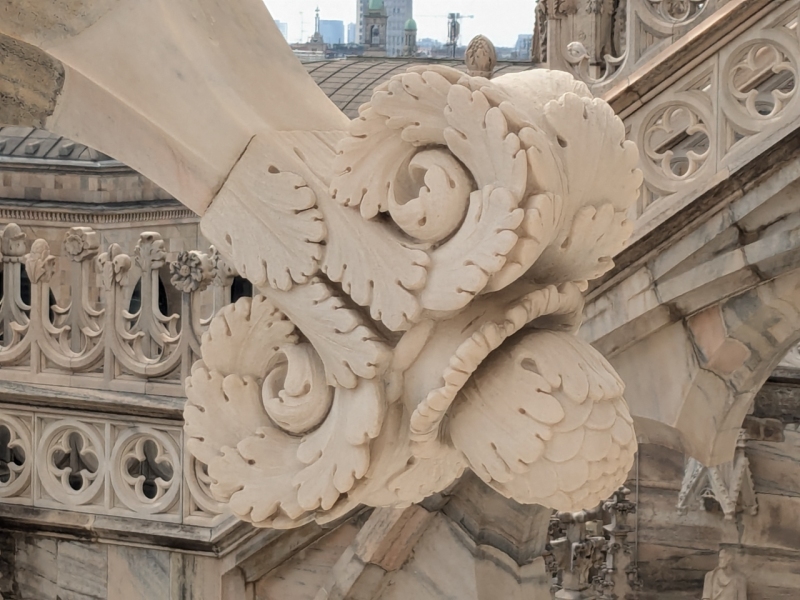
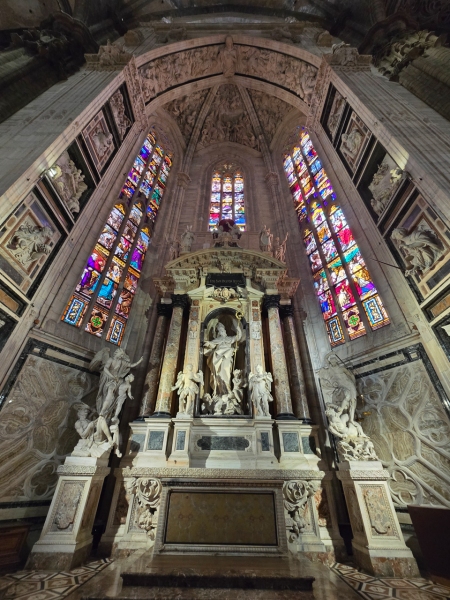
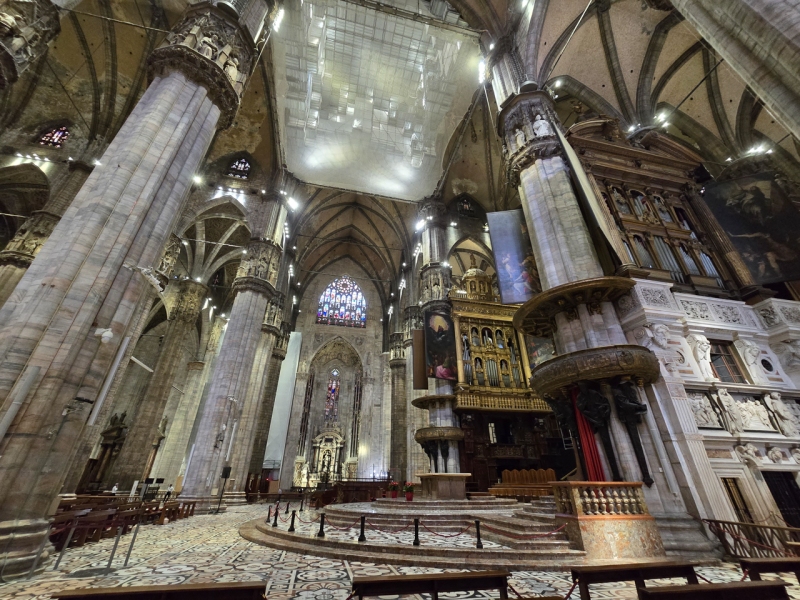
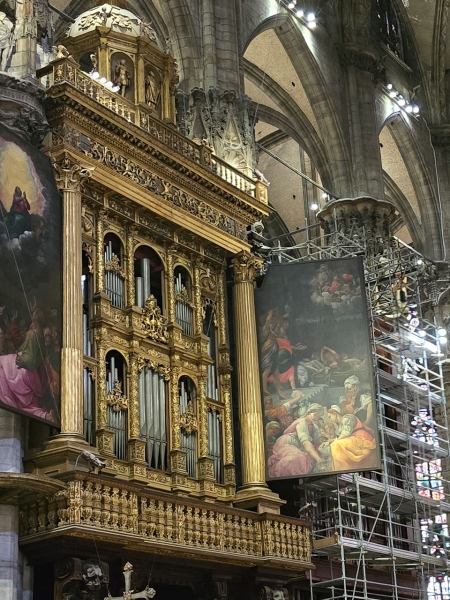
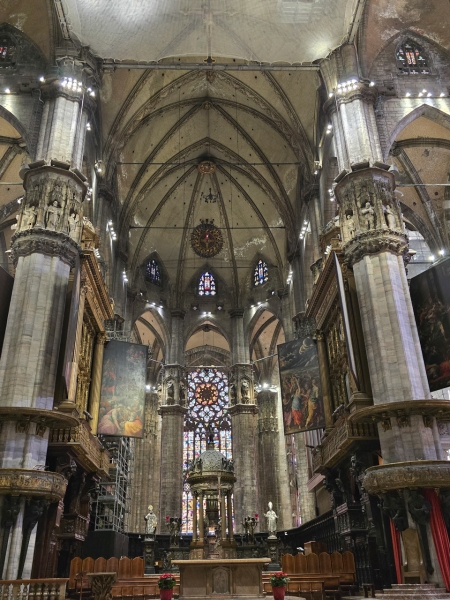
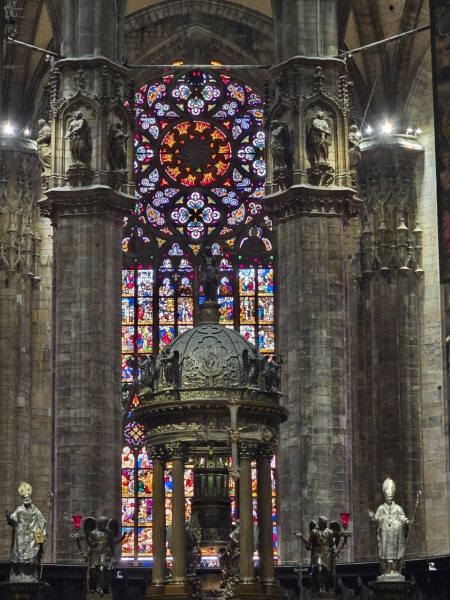
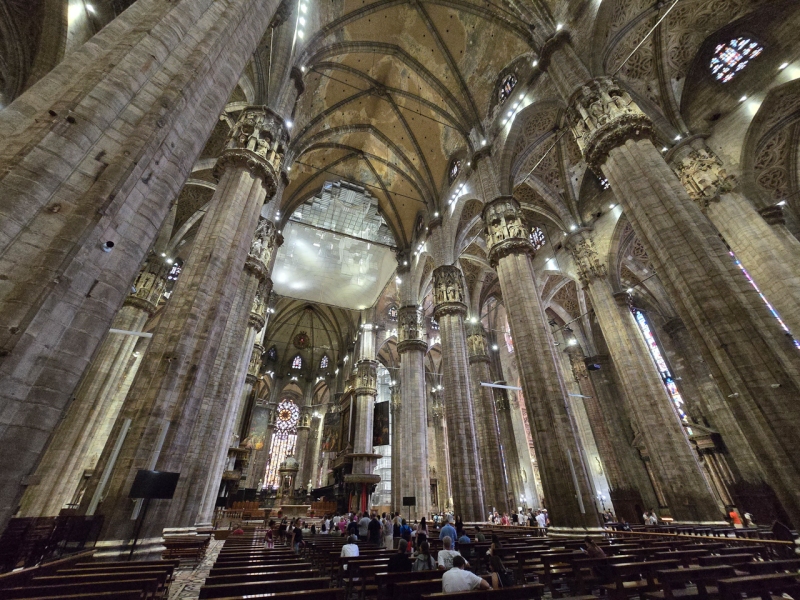
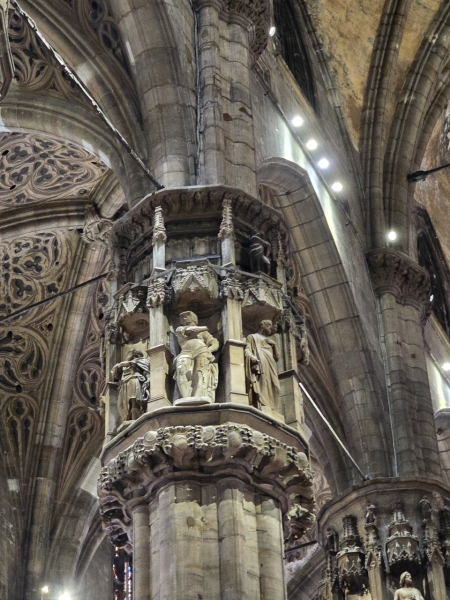
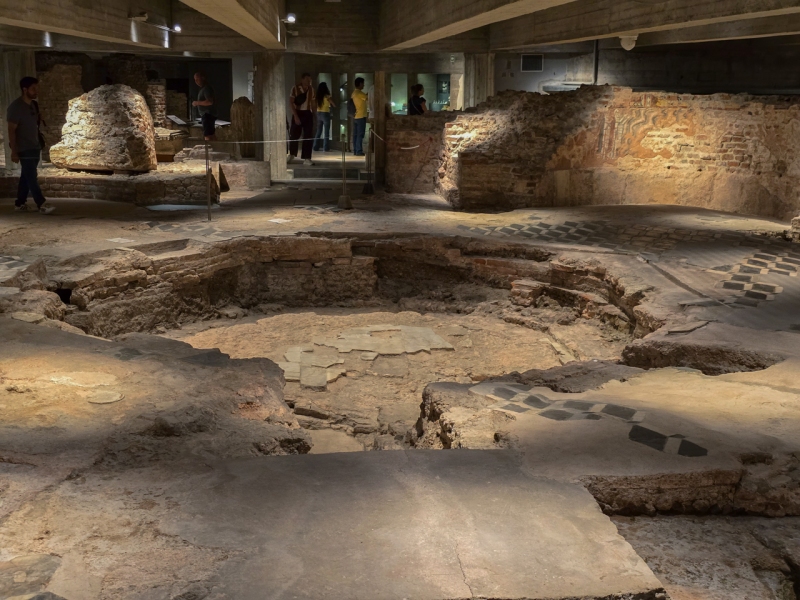
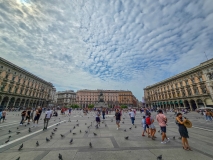
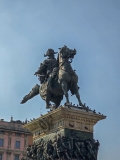
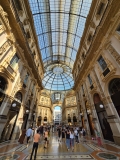
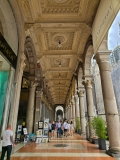
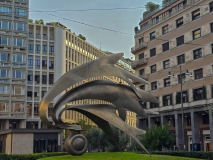
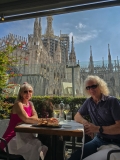
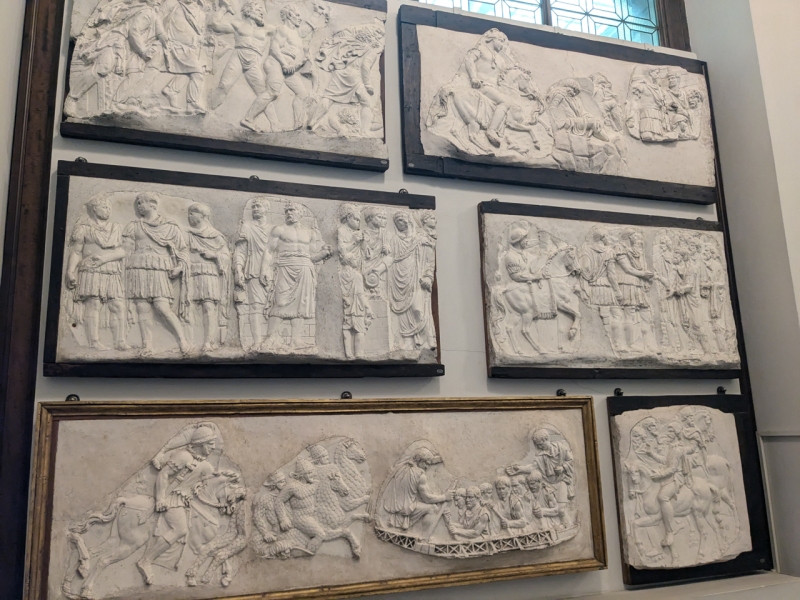
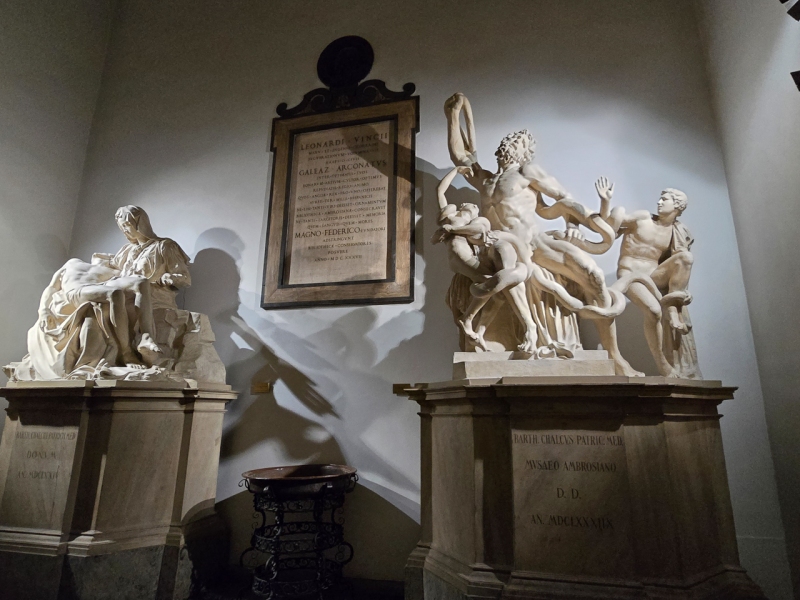
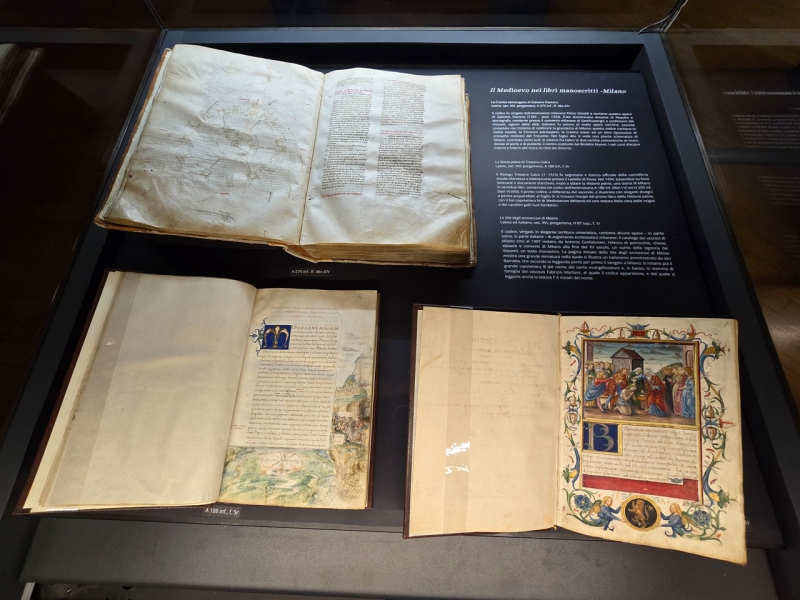
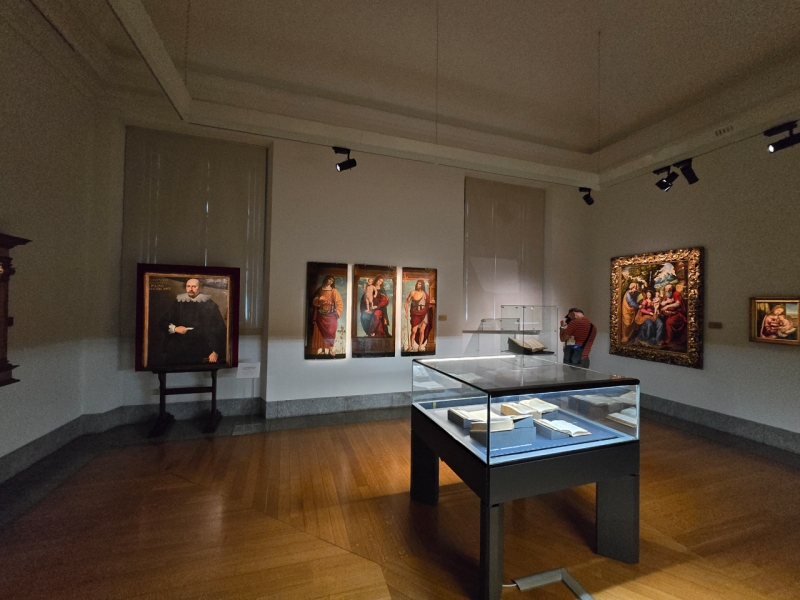
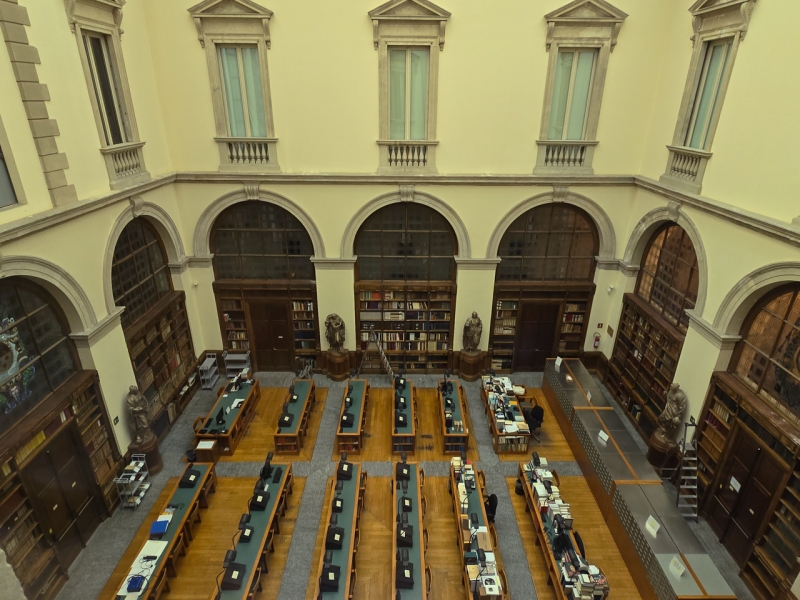
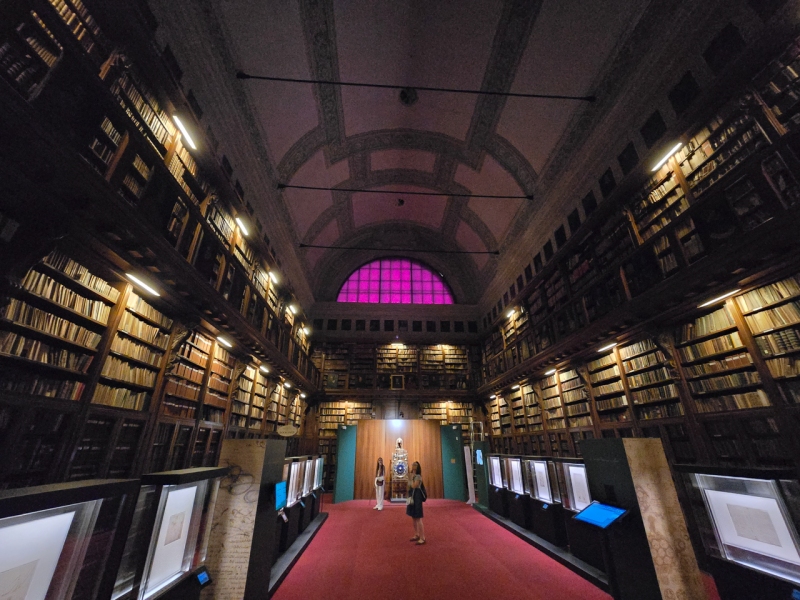
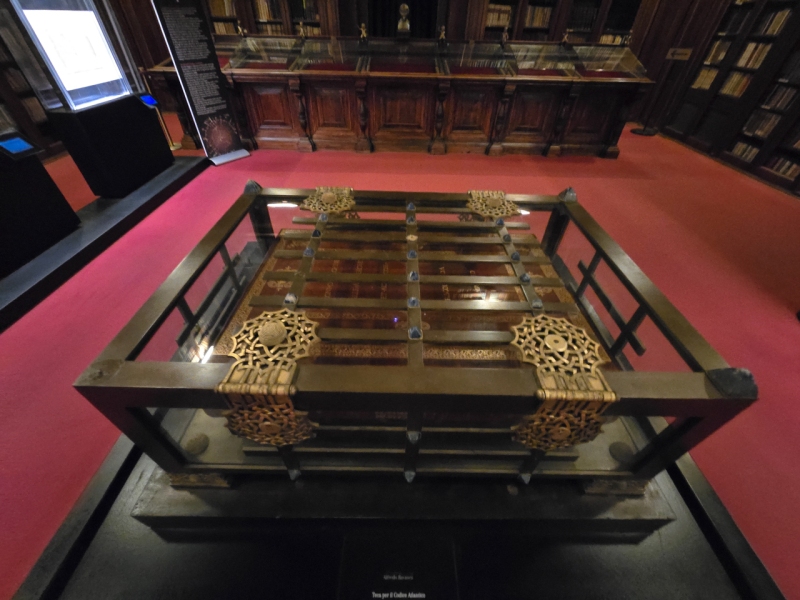
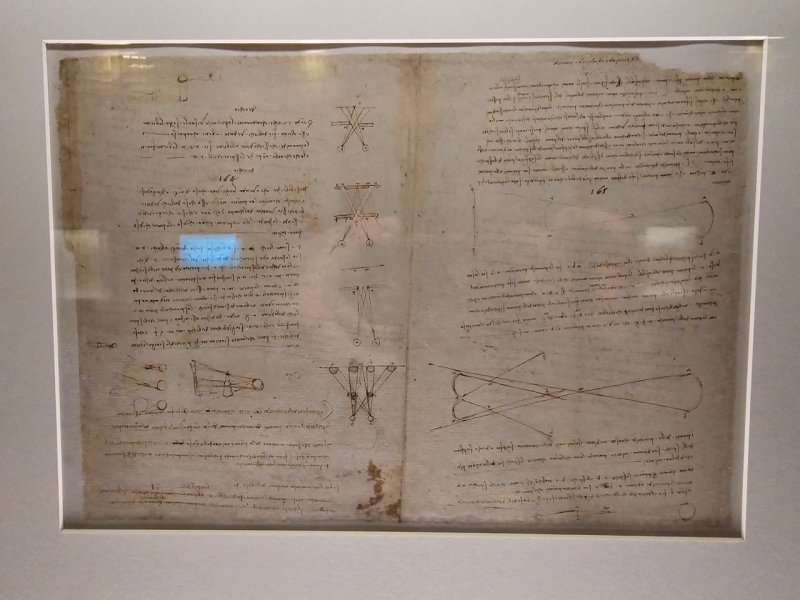
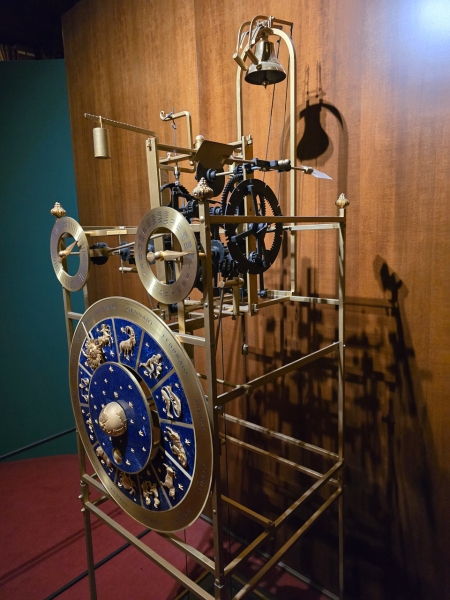
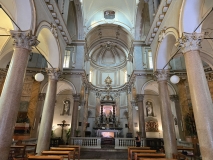
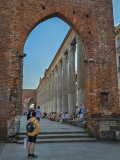
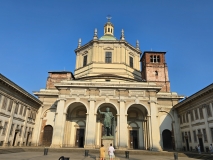
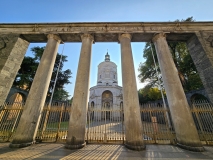
So, Venice, Cortina and Milan. Time for the truth! Where did you enjoy the food better? :)
That’s a tough call–the food was delicious everywhere. We really enjoyed our meals overlooking the canals in Venice, and opted for more casual fare in Cortina. Our final dinner of the trip at Veramente was a real standout though, which would give the edge to Milan.
Thank you for wonderful photos of the epic cathedral and other interesting places in Milan.
Thanks for the feedback John.